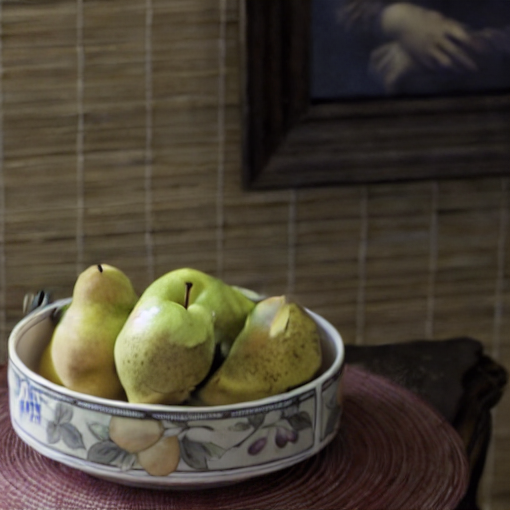Diffusers documentation
DiffEdit
DiffEdit
Image editing typically requires providing a mask of the area to be edited. DiffEdit automatically generates the mask for you based on a text query, making it easier overall to create a mask without image editing software. The DiffEdit algorithm works in three steps:
- the diffusion model denoises an image conditioned on some query text and reference text which produces different noise estimates for different areas of the image; the difference is used to infer a mask to identify which area of the image needs to be changed to match the query text
- the input image is encoded into latent space with DDIM
- the latents are decoded with the diffusion model conditioned on the text query, using the mask as a guide such that pixels outside the mask remain the same as in the input image
This guide will show you how to use DiffEdit to edit images without manually creating a mask.
Before you begin, make sure you have the following libraries installed:
# uncomment to install the necessary libraries in Colab
#!pip install diffusers transformers accelerate safetensorsThe StableDiffusionDiffEditPipeline requires an image mask and a set of partially inverted latents. The image mask is generated from the generate_mask() function, and includes two parameters, source_prompt and target_prompt. These parameters determine what to edit in the image. For example, if you want to change a bowl of fruits to a bowl of pears, then:
source_prompt = "a bowl of fruits"
target_prompt = "a bowl of pears"The partially inverted latents are generated from the invert() function, and it is generally a good idea to include a prompt or caption describing the image to help guide the inverse latent sampling process. The caption can often be your source_prompt, but feel free to experiment with other text descriptions!
Let’s load the pipeline, scheduler, inverse scheduler, and enable some optimizations to reduce memory usage:
import torch
from diffusers import DDIMScheduler, DDIMInverseScheduler, StableDiffusionDiffEditPipeline
pipeline = StableDiffusionDiffEditPipeline.from_pretrained(
"stabilityai/stable-diffusion-2-1",
torch_dtype=torch.float16,
safety_checker=None,
use_safetensors=True,
)
pipeline.scheduler = DDIMScheduler.from_config(pipeline.scheduler.config)
pipeline.inverse_scheduler = DDIMInverseScheduler.from_config(pipeline.scheduler.config)
pipeline.enable_model_cpu_offload()
pipeline.enable_vae_slicing()Load the image to edit:
from diffusers.utils import load_image
img_url = "https://github.com/Xiang-cd/DiffEdit-stable-diffusion/raw/main/assets/origin.png"
raw_image = load_image(img_url).convert("RGB").resize((768, 768))Use the generate_mask() function to generate the image mask. You’ll need to pass it the source_prompt and target_prompt to specify what to edit in the image:
source_prompt = "a bowl of fruits"
target_prompt = "a basket of pears"
mask_image = pipeline.generate_mask(
image=raw_image,
source_prompt=source_prompt,
target_prompt=target_prompt,
)Next, create the inverted latents and pass it a caption describing the image:
inv_latents = pipeline.invert(prompt=source_prompt, image=raw_image).latents
Finally, pass the image mask and inverted latents to the pipeline. The target_prompt becomes the prompt now, and the source_prompt is used as the negative_prompt:
image = pipeline(
prompt=target_prompt,
mask_image=mask_image,
image_latents=inv_latents,
negative_prompt=source_prompt,
).images[0]
image.save("edited_image.png")

Generate source and target embeddings
The source and target embeddings can be automatically generated with the Flan-T5 model instead of creating them manually.
Load the Flan-T5 model and tokenizer from the 🤗 Transformers library:
import torch
from transformers import AutoTokenizer, T5ForConditionalGeneration
tokenizer = AutoTokenizer.from_pretrained("google/flan-t5-xl")
model = T5ForConditionalGeneration.from_pretrained("google/flan-t5-xl", device_map="auto", torch_dtype=torch.float16)Provide some initial text to prompt the model to generate the source and target prompts.
source_concept = "bowl"
target_concept = "basket"
source_text = f"Provide a caption for images containing a {source_concept}. "
"The captions should be in English and should be no longer than 150 characters."
target_text = f"Provide a caption for images containing a {target_concept}. "
"The captions should be in English and should be no longer than 150 characters."Next, create a utility function to generate the prompts:
@torch.no_grad
def generate_prompts(input_prompt):
input_ids = tokenizer(input_prompt, return_tensors="pt").input_ids.to("cuda")
outputs = model.generate(
input_ids, temperature=0.8, num_return_sequences=16, do_sample=True, max_new_tokens=128, top_k=10
)
return tokenizer.batch_decode(outputs, skip_special_tokens=True)
source_prompts = generate_prompts(source_text)
target_prompts = generate_prompts(target_text)
print(source_prompts)
print(target_prompts)Check out the generation strategy guide if you’re interested in learning more about strategies for generating different quality text.
Load the text encoder model used by the StableDiffusionDiffEditPipeline to encode the text. You’ll use the text encoder to compute the text embeddings:
import torch
from diffusers import StableDiffusionDiffEditPipeline
pipeline = StableDiffusionDiffEditPipeline.from_pretrained(
"stabilityai/stable-diffusion-2-1", torch_dtype=torch.float16, use_safetensors=True
).to("cuda")
pipeline.enable_model_cpu_offload()
pipeline.enable_vae_slicing()
@torch.no_grad()
def embed_prompts(sentences, tokenizer, text_encoder, device="cuda"):
embeddings = []
for sent in sentences:
text_inputs = tokenizer(
sent,
padding="max_length",
max_length=tokenizer.model_max_length,
truncation=True,
return_tensors="pt",
)
text_input_ids = text_inputs.input_ids
prompt_embeds = text_encoder(text_input_ids.to(device), attention_mask=None)[0]
embeddings.append(prompt_embeds)
return torch.concatenate(embeddings, dim=0).mean(dim=0).unsqueeze(0)
source_embeds = embed_prompts(source_prompts, pipeline.tokenizer, pipeline.text_encoder)
target_embeds = embed_prompts(target_prompts, pipeline.tokenizer, pipeline.text_encoder)Finally, pass the embeddings to the generate_mask() and invert() functions, and pipeline to generate the image:
from diffusers import DDIMInverseScheduler, DDIMScheduler
from diffusers.utils import load_image
pipeline.scheduler = DDIMScheduler.from_config(pipeline.scheduler.config)
pipeline.inverse_scheduler = DDIMInverseScheduler.from_config(pipeline.scheduler.config)
img_url = "https://github.com/Xiang-cd/DiffEdit-stable-diffusion/raw/main/assets/origin.png"
raw_image = load_image(img_url).convert("RGB").resize((768, 768))
mask_image = pipeline.generate_mask(
image=raw_image,
+ source_prompt_embeds=source_embeds,
+ target_prompt_embeds=target_embeds,
)
inv_latents = pipeline.invert(
+ prompt_embeds=source_embeds,
image=raw_image,
).latents
images = pipeline(
mask_image=mask_image,
image_latents=inv_latents,
+ prompt_embeds=target_embeds,
+ negative_prompt_embeds=source_embeds,
).images
images[0].save("edited_image.png")Generate a caption for inversion
While you can use the source_prompt as a caption to help generate the partially inverted latents, you can also use the BLIP model to automatically generate a caption.
Load the BLIP model and processor from the 🤗 Transformers library:
import torch
from transformers import BlipForConditionalGeneration, BlipProcessor
processor = BlipProcessor.from_pretrained("Salesforce/blip-image-captioning-base")
model = BlipForConditionalGeneration.from_pretrained("Salesforce/blip-image-captioning-base", torch_dtype=torch.float16, low_cpu_mem_usage=True)Create a utility function to generate a caption from the input image:
@torch.no_grad()
def generate_caption(images, caption_generator, caption_processor):
text = "a photograph of"
inputs = caption_processor(images, text, return_tensors="pt").to(device="cuda", dtype=caption_generator.dtype)
caption_generator.to("cuda")
outputs = caption_generator.generate(**inputs, max_new_tokens=128)
# offload caption generator
caption_generator.to("cpu")
caption = caption_processor.batch_decode(outputs, skip_special_tokens=True)[0]
return captionLoad an input image and generate a caption for it using the generate_caption function:
from diffusers.utils import load_image
img_url = "https://github.com/Xiang-cd/DiffEdit-stable-diffusion/raw/main/assets/origin.png"
raw_image = load_image(img_url).convert("RGB").resize((768, 768))
caption = generate_caption(raw_image, model, processor)
Now you can drop the caption into the invert() function to generate the partially inverted latents!